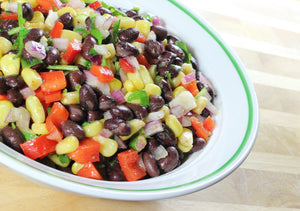How to Grow Summer Savory - Add this Mediterranean Herb to Your Garden
There’s always that one mystery herb that transforms a good dish into a great one. If you're looking for an easy-to-grow plant that adds incredible depth to your cooking, try summer savory (Satureja hortensis).

Originally from the Mediterranean and widely used in French cuisine, summer savory is most often seen in its dried form. But when you grow it yourself, you’ll discover just how much brighter and more flavorful it is when used fresh.
Summer savory is a key component of Herbes de Provence. This blend of herbs was made popular in the U.S. by the chef Julia Child. Once she introduced it, bottles of dried mixes were available in grocery stores. Now, you can grow this key herb in your own garden.
Quick Links:
How to Grow Summer Savory from Seed
You can sow summer savory seeds indoors 4-6 weeks before your last expected frost date or directly outdoors after the danger of frost has passed and the soil temperature is about 65ºF.
When starting seeds indoors, use a high-quality seed-starting mix and provide strong, direct light. We recommend using grow lights that are positioned close to the seedlings.

Tips for Fail-Proof Summer Savory Seed Germination
Summer savory seeds need light to germinate–barely cover with soil.
Keep soil at room temperature (65-70ºF).
Keep seeds moist until germination, which takes 7 to 14 days.
For summer savory plants started indoors, harden off the seedlings before transplanting. Summer savory seedlings should have at least 4 true leaves before being hardened off and transplanted.

How to Grow Summer Savory Plants
Space summer savory plants about 8 inches apart to allow airflow and room for mature growth. Summer savory can grow up to 18” tall and spread as it fills in.
Sun
Summer savory prefers full sun for optimal growth. Give plants at least 6 hours of direct sunlight daily for lush leaf development.
Soil
Water
Fertilizing
No fertilizer is needed when growing in the ground. If you are growing summer savory in a container, a light application of a balanced fertilizer during the season can help with growth.
Solutions for pests and diseases
Companion Plants for Summer Savory
Plant summer savory in an herb bed with other Mediterranean herbs, such as rosemary, sage, and thyme. They have similar growing conditions, making it easy to care for them all together.
Summer savory is also a good companion plant with onions and beans.
Tip: Summer savory and thyme can look very similar – label them to avoid confusion.

Harvesting Summer Savory
Begin harvesting summer savory when plants are about 6 inches tall. The best flavor comes just before flowering when the essential oil content is at its peak.
To harvest summer savory, cut branches off a few inches above the ground. This will allow for new growth. Harvest often to encourage more growth and a bushier plant.
Use fresh leaves right away or store them in the fridge for up to two weeks. Whole stalks of fresh savory are excellent for roasting in meat dishes.
Dry summer savory for longer-term storage. Hang branches to dry, then rub the leaves off and store them in airtight containers.
Let a few plants flower and go to seed to allow self-sowing for next year’s garden. Note: Summer savory is not frost-tolerant and will die with the first freeze.
Ways to Use Summer Savory:
Add to meat and vegetable dishes.
Mix into bottles of vinegar, oils, or herbed butters.
A flavorful addition to homemade sausage.
Grow Your Own Herbs de Provence Blend
To make your own blend, grow these herbs:
Bay leaf
Optional additions:
Customize your blend with more of what you love and less of what you don’t.
Summer Savory FAQs
Is Summer Savory an annual or perennial?
Summer savory (Satureja hortensis) is an annual. It completes its life cycle in one season but may reseed naturally.
Does Summer Savory spread?
It doesn’t spread like a perennial, but if allowed to flower and drop seeds, it can self-sow and return next season.
Growing your own herbs is always the best way to enjoy the most potent flavor, and summer savory is no exception. Homegrown herbs also ensure you have fresh, organic, and chemical-free ingredients picked at their prime. For cost and flavor, there’s no comparison.
Start growing summer savory in your garden and make your food the best it can be.






Leave a comment